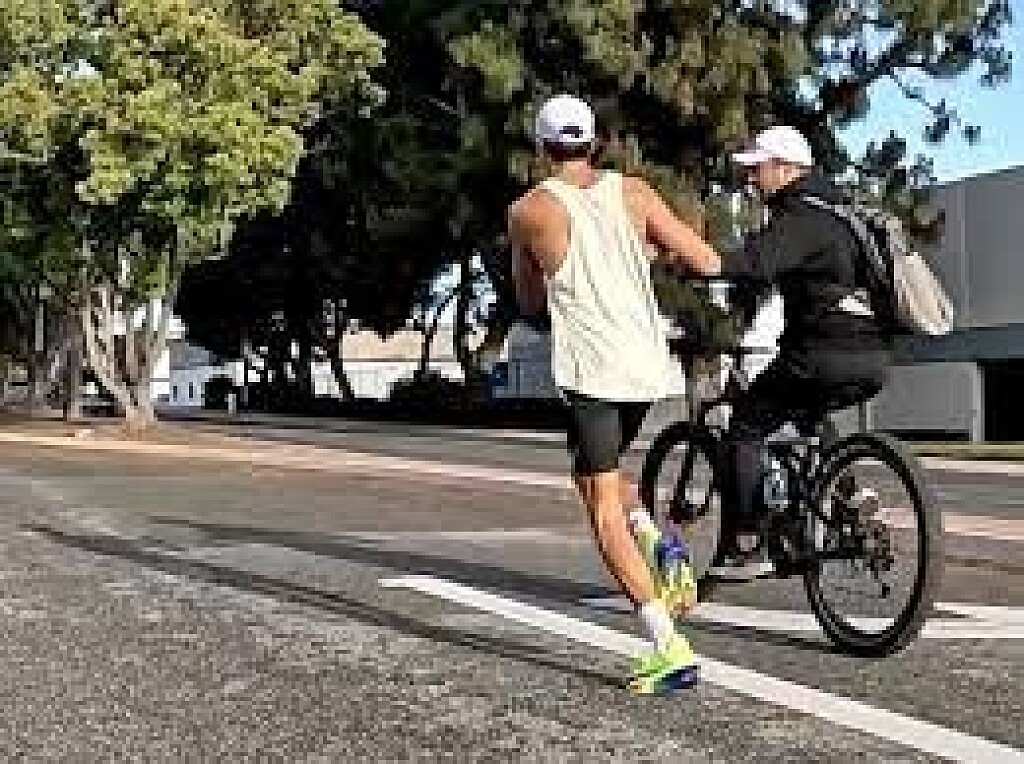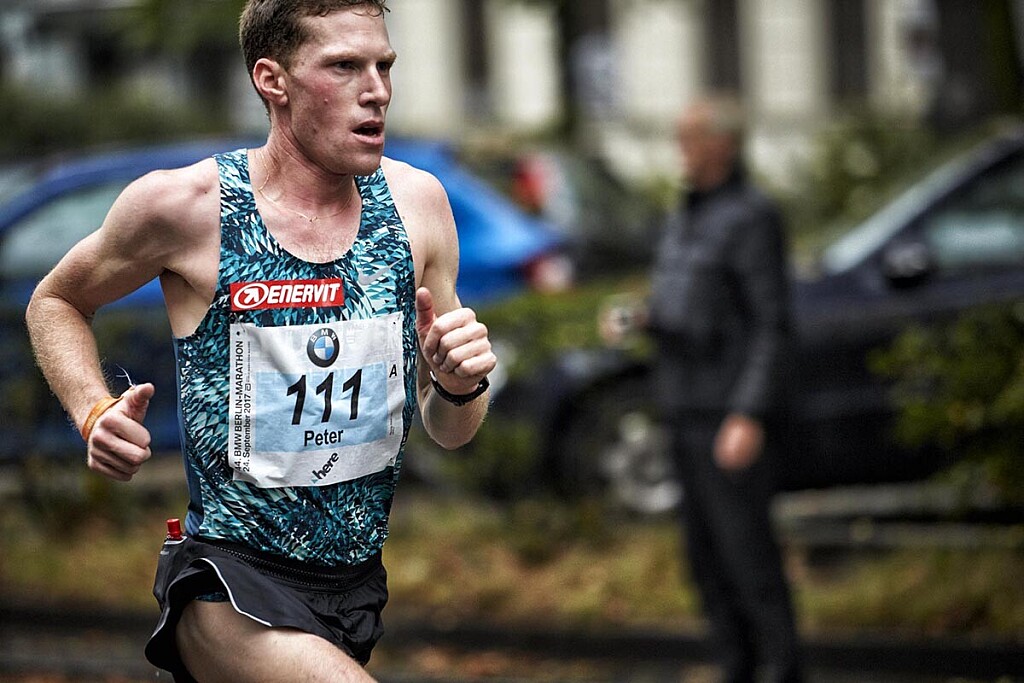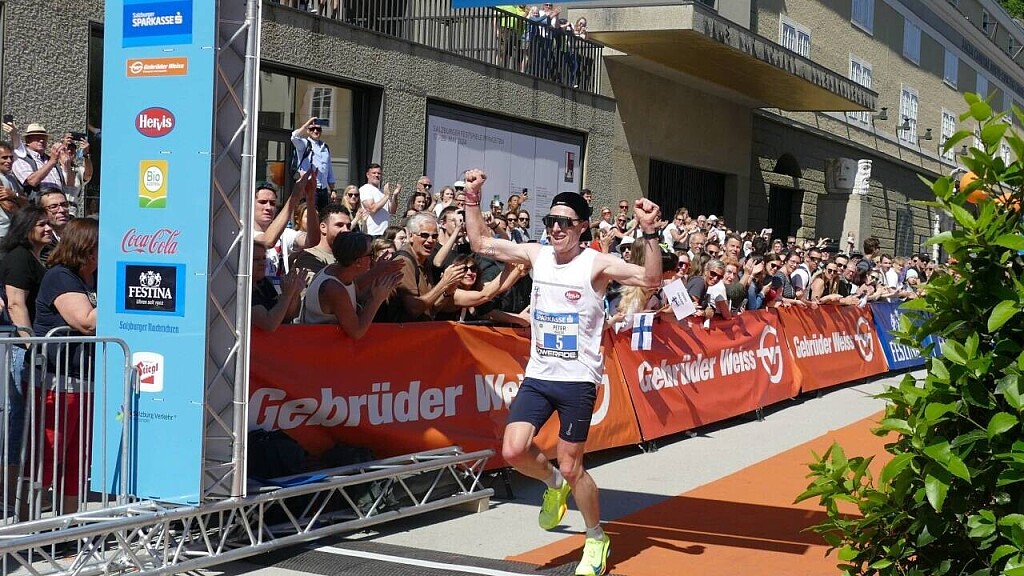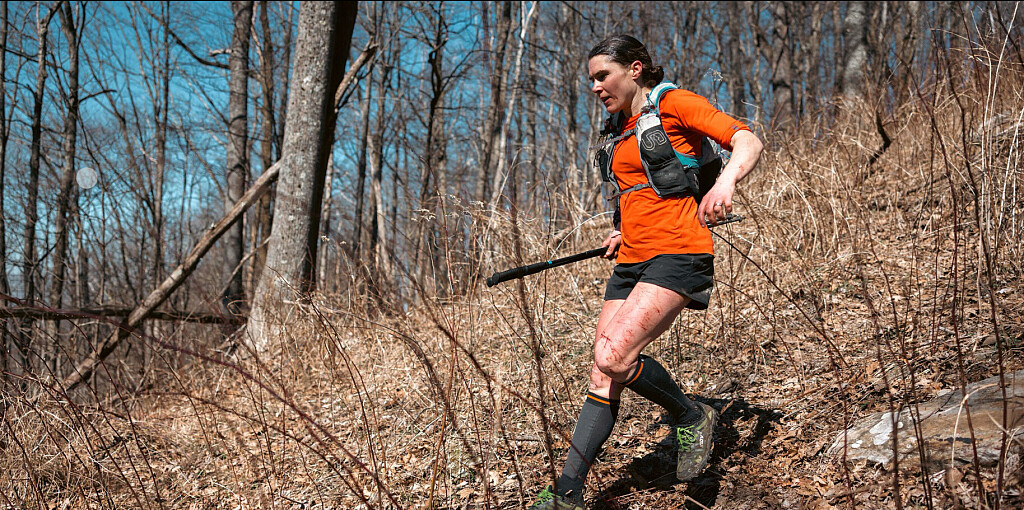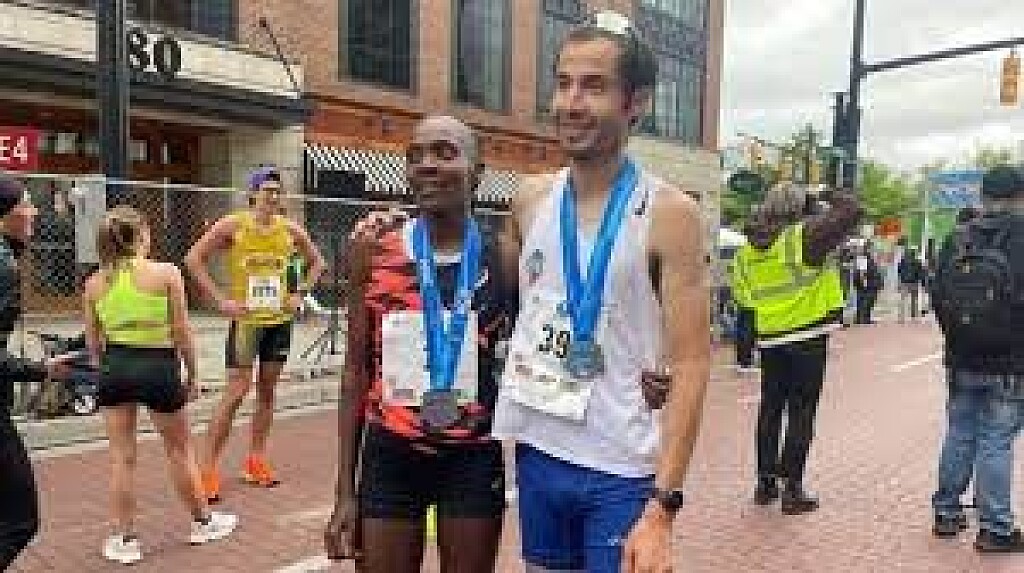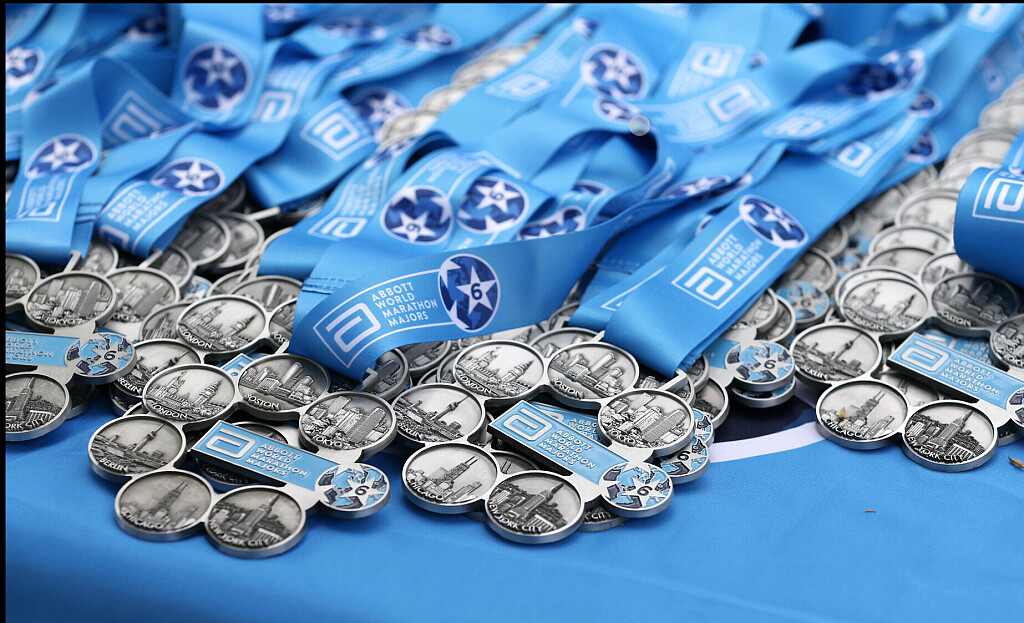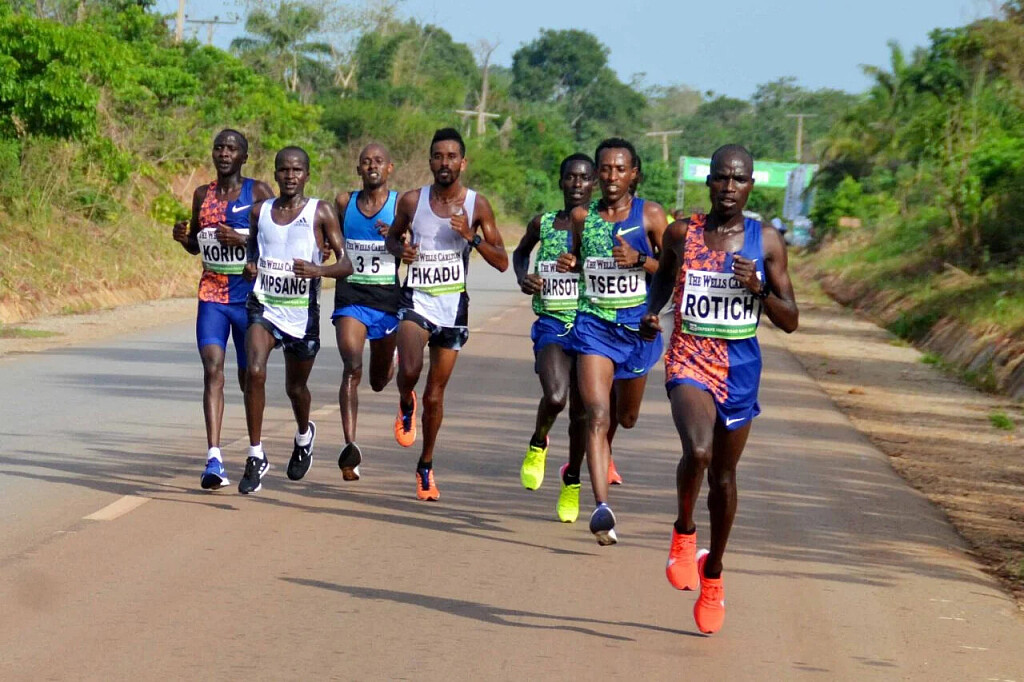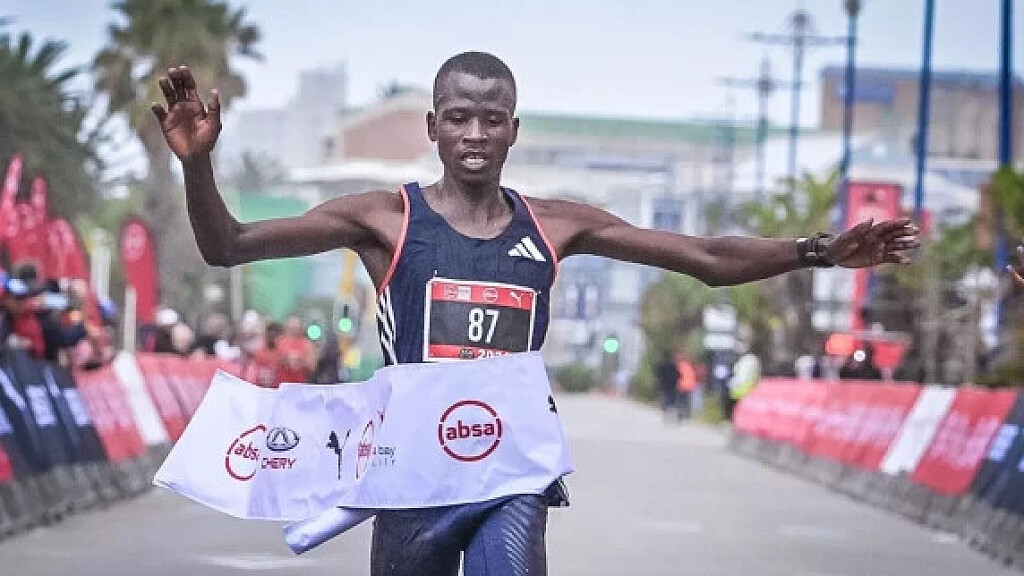Running News Daily
Top Ten Stories of the Week
5/18/2024
These are the top ten stories based on views over the last week.
Three snappy interval sessions for unstoppable stamina
Becoming a strong runner means occasionally suffering through some discomfort, whether it’s during a long training run or a harder-than-anticipated race day. Spice up your weekly routine with some pain-tolerance-building intervals by adding a stretch session. Adaptable for any ability, a stretch workout will have you pushing your limits and will leave you spent.
A stretch session involves covering slightly more distance in each segment of a set of time-based intervals, culminating in an all-out effort in the final push. This type of workout challenges you to pay close attention to your effort level, while the gradual increase in pace builds discomfort tolerance by forcing you to speed up as your legs tire.
It’s important to pace yourself in a stretch session; choose your starting speed wisely. If you begin too fast, you won’t be able to increase your pace from there—your first interval should be hard, and your last one or two should be an all-out effort. Adjust the length (and number) of your intervals according to your ability or goals, and feel free to run stretch sessions on road, track or trail.

1.- Stretch interval basics
Warm up with 10-15 minutes of easy running.

Run 5-6 x 2 minutes, with each progressively getting faster—take 3-4 minutes rest as you jog back to your starting point.
Cool down with 10-15 minutes of easy running.
2.- Uphill stretch session
This session is done by effort, rather than using a GPS watch to calculate distance; you could also use markers instead of a watch, when running on the flats.
Warm up with 15 minutes of easy running.
Run fast uphill for 1 minute and drop a marker (a brightly colored sock works) at your stopping point; recover over 2 minutes as you run back to your starting point.
Run uphill fast for 1 minute again, aiming to cover slightly more distance than you did the first time. Drop a second marker at your stopping point. Recover over 2 minutes as you jog back to your starting point.
Repeat 6-10 times, depending on your fitness level, with your final rep run at full speed.
Cool down with 10-15 minutes of easy running.
3.- Short and sweet
Short on time? This stretch workout is perfect for those days when you’re slammed but need to get in some solid training.
Warm up with 5-10 minutes of easy running.
Run 6-8 x 1 minute of progressively harder efforts, with 2 minutes of easy running as you move back to your starting position.
Cool down with 5-10 minutes of easy running.
After any harder training session (even a short one), take a rest day or a very easy running day, and remember to hydrate well.
(05/11/24) Views: 273Keeley Milne
Marathon winner disqualified after taking, drinking water from dad during race
The winner of a marathon was disqualified after taking and drinking water from his father during the race.
According to PEOPLE, 24-year-old Esteban Prado initially finished in first place in the Orange County Marathon on Sunday. Per the publication, he crossed the finish line with a time of 2 hours, 24 minutes and 54 seconds, but was disqualified soon after.
USA Today reported that Prado's father rode up to the former winner on a bike and gave him water during the competition. Organizers also said that Prado drank from the bottle, which violated the USA Track and Field rulebook, according to the publication.

Per USA Today, citing the rulebook, competitors may only use water from official hydration stations or if it's carried or attached to the runner from the beginning of the race, with no outside drinks being permitted without permission from the judges or referees.
Race director Gary Kutscher issued the following statement to USA Today:

"We were forced to disqualify a participant after it was confirmed they received unauthorized assistance from an individual on a bicycle, in violation of USA Track and Field rules and our race regulations. We take these rules seriously to ensure fairness and the integrity of our event for all competitors."
Prado spoke with KABC, and said that he wasn't aware of the rule regarding taking water from spectators, adding that only the second place runner could have seen him drink it.
"Whenever I got to these stations, the volunteers were scrambling because I'm the only runner in sight," Prado told KABC. "You could barely see me, like, at certain turns."
Prado went on to tell KABC's reporters that he didn't lose much from the decision.
"I don't want to argue over something that's 15 minutes away from you, you get no money or anything. You know, if he wanted that congratulations for that first place, if he really felt like he needed it, it's just for him at the end of the day," Prado told the station. "I really got nothing out of it. I know I won."
Per KABC, Jason Yang of San Pedro was declared the winner with a time of 2 hours, 25 minutes and 11 seconds.
(05/10/24) Views: 137WKRC
Salzburg prepares for duel between Murithi and Herzog
The Salzburg Marathon is ready for its 21st edition on Sunday, May 12th. A new starting area, the historic flair of the “Mozart City”, the participation of the Austrian national record holder and a truly international field with runners of 85 nationalities provide all the ingredients for an unforgettable event.
Austrian national record holder Peter Herzog and Kenyan Peter Wahome Murithi are the headliners in the marathon race. An exciting duel is on the cards. Herzog has a personal best of 2:10:06 from London 2020 and made a return to good shape this spring after a year and a half full of injuries. Murithi even ran 2:09:40 in Graz 2023, a time that has to remain unofficial, as this event was not registered in the World Athletics Global Calendar.
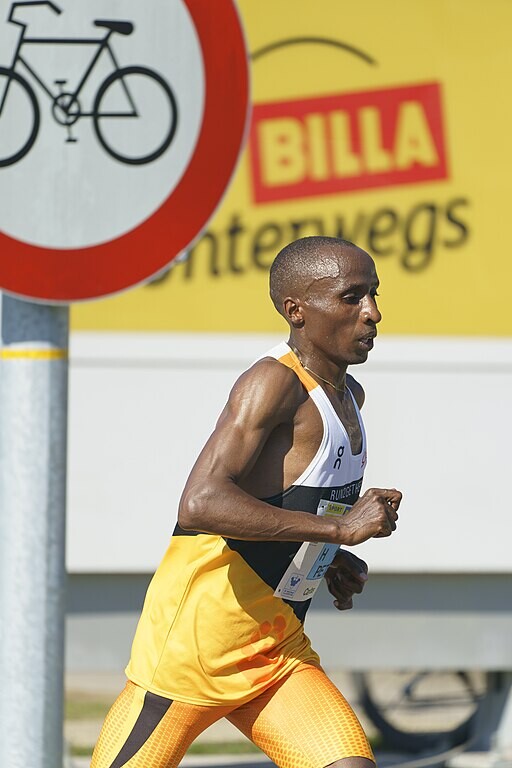
Both athletes are coming to Salzburg bringing their personal running experience from the recent Vienna City Marathon three weeks ago. Herzog made a fine comeback in 2:15:29 in Vienna, while Wahome was on course for a sub-2:10 time, but dropped out after 30 km due to health problems. He is now hoping to make the most of his second chance to achieve a good result in this spring marathon.
Local hero Peter Herzog explains: “It was a decision of desire, not necessarily one of logic. I have rediscovered my marathon euphoria and am delighted that I will be able to enjoy this special marathon feeling a second time.”
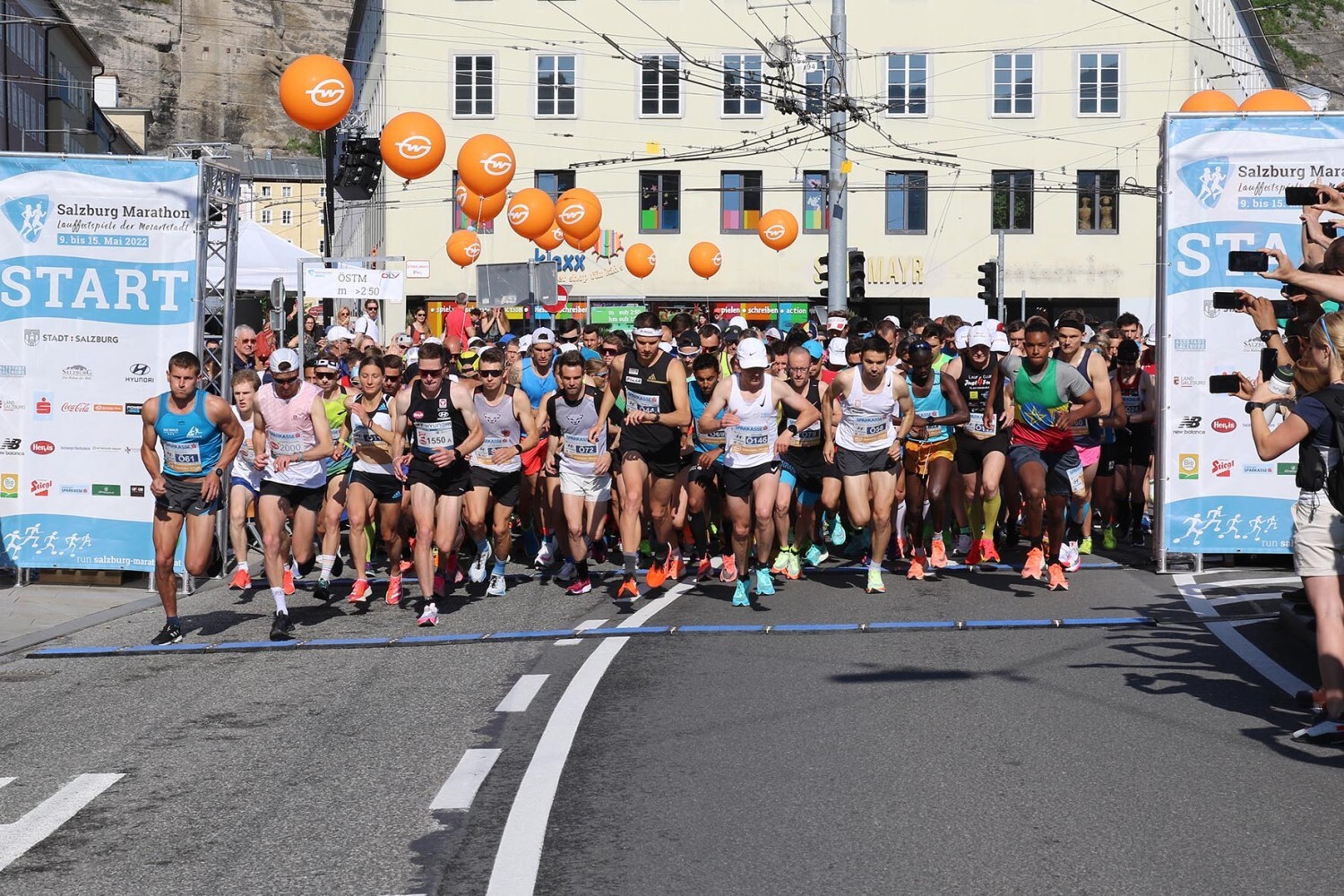
The marathon field will be sent off at a new start area on the “Staatsbrücke“ bridge with a great view on the historic city center and UNESCO World Heritage Site of Salzburg. “Over the past two decades, we have gradually put Salzburg on the international map of running and anchored it there. Today, we are an international event that attracts participants of 85 different nationalities from all over the world. Our aim is to ensure that they arrive in Salzburg with anticipation and a good feeling and return home with outstanding personal experiences“, say the race organizers.
Compared to previous years, the start has been brought forward by half an hour. This will give amateur runners in the marathon in particular the opportunity to run in the cooler morning hours for 30 minutes longer and 30 minutes less in the time when the highest temperatures of the day are expected.
Public transport to and from the race is available free of charge for all participants within the region of Salzburg on the day of their race. Salzburg Marathon is certified as an ecologically sustainable event by Austrian control authorities. Runners enjoy high quality organic food made from local products at the marathon village. The use of renewable materials and an integrated programme for the reduction of transports and natural resources is in place.
(05/11/24) Views: 135AIMS
How to Use Running to Overcome Your Anxiety, According to Experts
If you have running anxiety instead of finding relief in the movement, here’s why and how to change that.
I learned that I suffer from anxiety when, some 10 years ago at the age of 20, I checked myself into a hospital for what I was convinced was an impending heart attack. My chest felt tight, my breathing rapid, my head spinning, arms tingling. I couldn’t think straight. After a series of tests, the ER doctor told me that physically, I was healthy. Then he gently suggested what I’d just experienced may have been a panic attack.
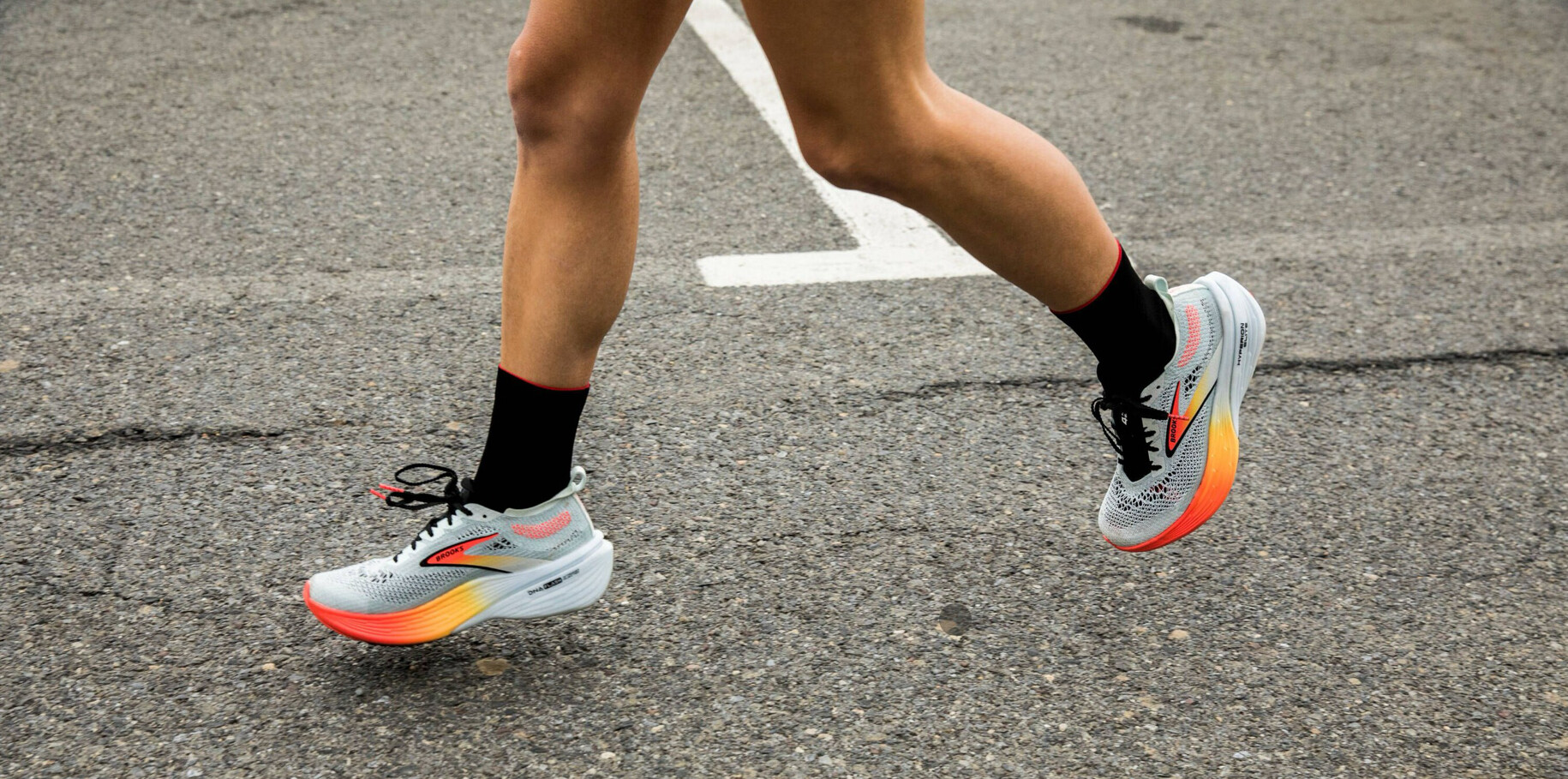
That a mental state could manifest itself as physical symptoms was a complete revelation to me. I’d experienced a variety of them before (usually attributing them to post-illness recovery or environmental reactions) but not at this magnitude. To help treat my anxiety, among other things, he recommended aerobic exercise. Because of its low barrier to entry, I turned to running.
My controlled treadmill runs went fine, but the moment I ran outside, it took a mere few minutes before a wave of tension washed over my body, leading to the symptoms I knew so intimately: shortness of breath, a fast-beating heart, sweating. Running made me more anxious, I figured. I tossed the idea—together with my running shoes—in the corner, and that was where my short-lived running venture ended.
It would take years for me to lace up my running sneakers again. I had to learn about how to get into running gradually and pace myself, along with accepting that I can walk when I need to. Now, running helps me manage my anxiety in ways I’d never expect.
After talking to other runners and psychologists, I learned that my situation isn’t unique. So with the help of experts, we’re sharing tips on how to make running work for your anxiety, alleviating your symptoms instead of exacerbating it.
What is anxiety?
Anxiety is the world’s most common mental health disorder, according to the World Health Organization (WHO).
“We have fear and we have anxiety,” says Arash Javanbakht, M.D., a psychiatrist and director of the Stress, Trauma, and Anxiety Research Clinic at Wayne State University, and the author of AFRAID: Understanding the Purpose of Fear, and Harnessing the Power of Anxiety. “Fear is when I’m perceiving a danger that is clear and identified. Anxiety is a vague state of fear when I’m worried about something happening with no specific thread detected yet.”
Around the world, 301 million people had an anxiety disorder in 2019, WHO reported, and although it’s highly treatable, only one in four people receive treatment.
We think of anxiety in two ways, says Jacob Meyer, Ph.D., an associate professor of exercise psychology and the director of the Wellbeing and Exercise Lab at Iowa State University. There is state anxiety, which is situational and can fluctuate throughout the day. Then there is trait anxiety, which, unlike state anxiety, stays with the individual and is thought of as less modifiable but can potentially improve with the right intervention over time.
Running can be part of this intervention.
What is the link between running and anxiety?
Running is scientifically proven to positively affect not only your physical, but also your mental health.
“People who exercise generally feel less stressed, less depressed, less anxious, less fatigued, more energetic, and tend to have better cognitive function,” Meyer says. “Almost any psychological process you might be worried about, at least in the short term, can be influenced positively by exercise.”
Zooming in on anxiety specifically, running can play an important role in treating the mental condition because it triggers the release of neurotransmitters like serotonin, a chemical that acts as a natural mood stabilizer, and a lack of which is linked to anxiety. It plays a role so important, in fact, that we dedicated a whole section to the science of it in The Runner’s World Guide to Mental Health.
As a plus, exposure to physical symptoms of anxiety can have a therapeutic effect, as you’ll learn to feel safer and more comfortable with these symptoms.
“Your brain automatically feels less worried about, say, increased heart rate or a tightness in the chest because it has happened over and over in a friendly environment where you had fun and nothing bad happened,” Javanbakht says.
By running, you’re creating more resilience against anxiety and exerting a bit of control over the situation.
How can you overcome running anxiety?
Understanding the science behind running’s positive influence on anxiety is a great first step toward utilizing the sport to improve your mental health. Here are some more suggestions on how to overcome running anxiety:
Get the official “clear”: If you have medical concerns, talk to your doctor to ensure you’re physically healthy and have no reason to worry about the sudden increase in heart rate or shortness of breath that aerobic exercise causes.
Start exposing yourself to running: If you previously thought of your running symptoms as anxiety symptoms, you created a link in your head that needs to be rewritten. One tool to help you do that is exposure therapy, especially in a controlled environment, like on a treadmill. “You crank it up, you feel your heart rate and your breathing getting labored, then you turn down the intensity,” says Jennifer Heisz, Ph.D., an associate professor in the department of kinesiology at McMaster University and the author of Move The Body, Heal The Mind: Overcome Anxiety, Depression, and Dementia and Improve Focus, Creativity, and Sleep. “As you watch all those body symptoms return to baseline, you realize you’re okay. In theory, exposing yourself to those symptoms can create a habituation to them so they’re not as fear-provoking.”
Keep your run under control: Slow progress is key. While on the run, reach the level of anxiety you can tolerate, say four or five out of 10 on a scale of perceived exertion, and stay there, Javanbakht says. Don’t let it get up, instead, stay with it until it recedes. “You have now developed a new learning,” he says. “Master this level, don’t rush it because, at the same time, you’re gaining confidence. Then you can move to the next level of exertion. Gradually, you’ll overcome your anxiety.”
Find a running buddy or group: “Social support is a major factor in how people feel in response to activity,” Meyer says. Surround yourself with like-minded runners who match your pace and goals. From helping you keep it slow while chatting to distracting you from your symptoms, experiencing running alongside others, and having a support network right alongside you goes a long way—and so does accountability.
How can you deal with anxiety if it comes up on the run?
The anxious state often arrives unexpectedly. If you feel anxiety creeping up while running, try the following strategies:
Repeat to yourself: You’re safe: If your anxiety doesn’t have any roots in your physical state, reminding yourself that you’re safe can help reduce the feeling of anxiety, Javanbakht says. Remember that most of your anxieties are false alarms.
Reframe your thoughts: When you start experiencing symptoms you perceive as anxiety, such as sweating, instead of negative concerns, try to link it to a positive thing, being caused by the movement you’re doing. “Think, how do I link my behavior to my feelings in an intentional and systematic way? Let’s make it my goal to reorient the way I think about sweating,” Meyer says. The same goes for other symptoms. Reframe them as you go.
Practice mindfulness: Anxiety means that your mind is in the past or the future, instead of the present. Mindfulness exercises can help bring you back to your body. While on the run, pay attention to the sounds you hear, or look around and list the colors you see, with all its shades, Javanbakht says. You can use all five senses, including your bodily feelings, to ground yourself in your body and the present moment.
Try humming: In one of the latest podcast episodes of Brene Brown’s Unlocking Us, Esther Perel, a psychotherapist, explained the soothing benefit of humming, which not only recreates the sounds heard by a baby when still in utero and the sensation of hearing the voice on the inside, but also, while humming, you’re very likely to focus on doing that instead of other worries on your mind. “When you hum, you create a barrier, a space between the thought that is creating the anguish and your nervous system,” Perel says.
What if anxiety perseveres?
On days when you go for a run already feeling anxious, be extra kind to yourself. Your heart rate may be elevated or you may already feel short of breath going into it, so take it slower than you normally would. Taking a break from tracking metrics on apps like Strava and letting go of expectations may be beneficial.
“Uncoupling exercise from performance for mental health may help,” Heisz says. “On days I’m not feeling very good, I take the intensity off and just put in the time. More of a compassionate approach to exercise is absolutely necessary.”
In the end, just remember that you’re not anxious as your default, you just have anxiety. Not every run will feel like a million bucks, but it doesn’t mean that running isn’t your thing. Tomorrow is always another day for another run.
As for me, it’s been a long journey to get here. These days, I run to soothe my anxiety, to silence it while being in control of the symptoms that once stood in my way. Hand-in-hand with therapy, I found it to be the best tool to help me make it through any day, but especially the ones ridden with anxiety. I may have been skeptical once, but I now believe that running is for everyone.
(05/12/24) Views: 135Herzog and Kovacs win Salzburg Marathon
The marathon specialist Peter Herzog from Saalfelden (Pinzgau), who has been active internationally for a long time, won the Salzburg Marathon on Sunday. The 36-year-old ran for the first time in his own state capital. The Hungarian Eva Kovacs won the women's event.
For his victory, Herzog needed two hours, 21 minutes and 46 seconds to cover the 42.2 kilometers. Shortly behind him, world-class runner Peter Wahome Murithi from Kenya crossed the finish line – just under a minute behind. Then nothing happened for a while. The Austrian Mahdi Sareban came third, almost 15 minutes behind Herzog.
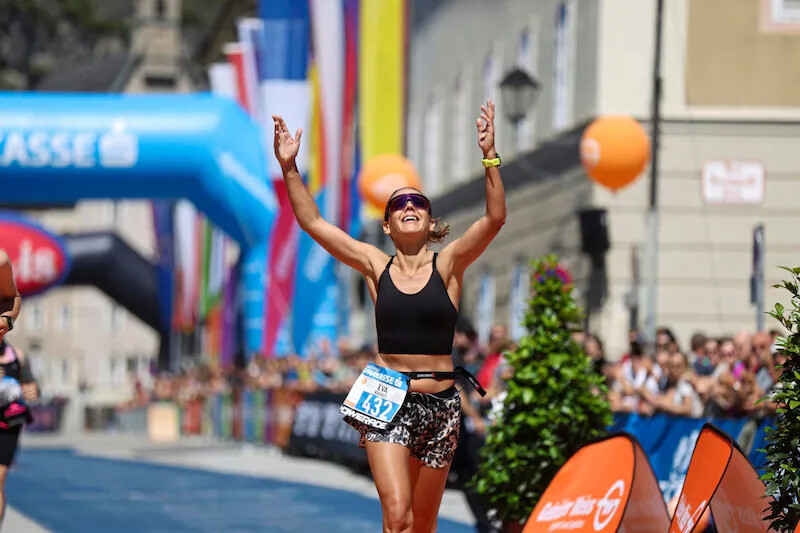
The Pinzgauer's song of praise for the route
The Saalfelden native said immediately after his arrival: “It went better than I could have hoped for. Time is totally irrelevant. The feeling was awesome. By the second round I already felt that I was no longer as fit as I was in Vienna. But the marathon feeling and the scenery were perfect. That’s exactly how I wanted it.”
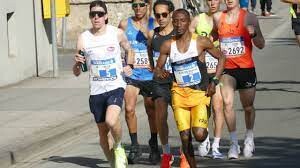
Hungarian woman in front
In the women's race, Hungarian Eva Kovacs needed three hours, nine minutes and six seconds - ahead of Tyrolean triathlete Sabrina Exenberger, who arrived two minutes later. The German Eva Kiggen came third.
(05/13/24) Views: 133She’s the First Woman to Finish the Barkley Marathons—Ever. Here’s How She Did It.
Jasmin Paris did the “impossible” with the same pair of shoes she wore in her first two attempts. The Barkley Marathons is not a race in the traditional sense. It’s a war of attrition where participants, at times, work together more than they want to beat each other to the finish line. Completing five 20-ish mile laps under the 60-hour time limit is the goal—the order of the finishers is secondary.
The 2024 edition of the race, which started at 5:17 a.m. on March 20 and concluded 2.5 days later on March 22, was historic. Five runners completed the arduous race—the most in one year ever—including the first woman to finish, Jasmin Paris, a 40-year-old British mother of two.
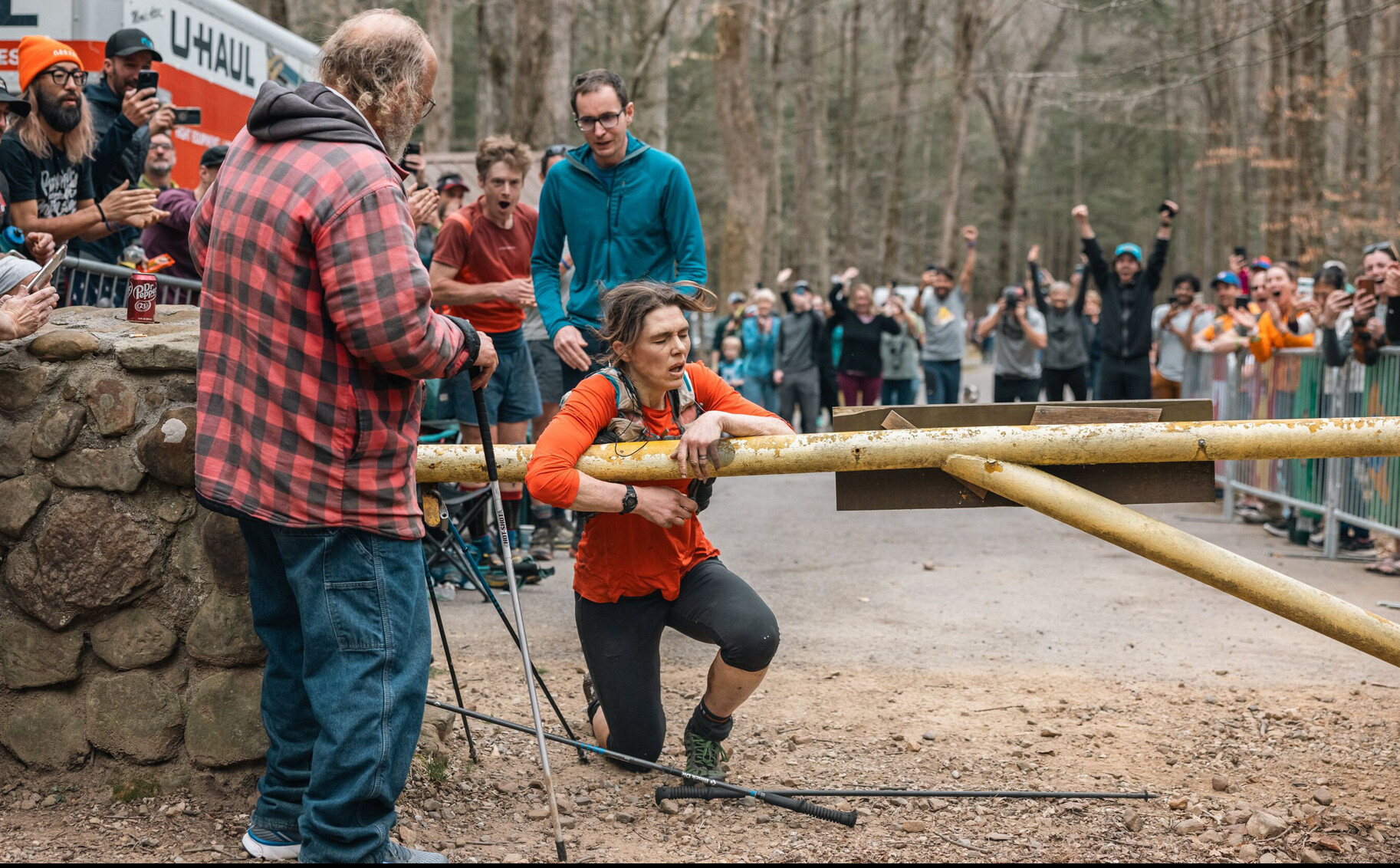
Skeptics, including the race’s controversial organizer, Lazarus Lake, have stated in years past that it was impossible for a woman to complete Barkley. But Paris broke the glass ceiling, finishing with less than 2 minutes to spare, in 59:58:21. (At this year’s race, only four of the 40 participants were women.)
“I’ve always enjoyed proving people wrong, especially if it’s something to do with being told that a woman can’t do it,” Paris said after the race. “It gives me great satisfaction.”
Runner’s World caught up with Paris, fresh off a well-deserved vacation with her family, to talk about how she prepared for the unpredictable ultramarathon.
Hills pay the bills
Barkley is a race where experience matters. It’s uncommon for someone in their first year to finish. But after becoming the first woman to complete three loops in 2022 and again in 2023, Paris was hungry to come back.
“The first time, I was intrigued by this idea of something that was on the very cusp of what was possible,” she said. “And clearly, the likelihood is that you would fail. But there’s still this glimmer of a chance that you might not fail.”
Barkley is difficult to plan for because of secrecy. It’s invitation-only, and participants are quietly told that they can race an undisclosed amount of time before the event. The starting date changes year-to-year, but it’s generally sometime in March or early April.
Paris had an inkling that she’d be given a chance to become the first woman to finish, so she planned her winter training on the assumption that she’d line up. Metatarsal pain in November and December forced her to cross-train on the elliptical or bike for six weeks, but by Christmas, she was back running.
Paris then hunkered down on hill work. At Barkley, a race with an estimated 65,000 feet of elevation gain, it’s essential to practice climbing—something that Paris doesn’t shy away from anyway. For years, she honed her skills at fell races—a niche sport where runners race off-road over hilly terrain—and this Barkley cycle, she added even more elevation than in years past.
As a cornerstone of her training, Paris added circuits of hills into her long runs around the foothills near her home in southern Scotland. She would also supplement her running (and hiking) with sessions on the stair climber, where she’d knock out 3,200 feet of climbing in 40-minute intervals.
About a month out from Barkley, Paris completed her toughest week of training yet: 90 miles of running with an extra 20 miles of hiking. She estimates she traversed around 36,000 to 39,000 feet of elevation that week. (Mt. Everest is 29,000 feet tall, for comparison.)
Her most Barkley-like training run was a 22-miler over the winter. Usually, Paris will run before she drops her kids off at the pool on Saturday mornings, but she planned a long workout, so she went to bed at 8 p.m. the night before and started her run at 1 a.m. The session, in driving rain that turned to snow, simulated the testy conditions she might experience at Barkley on a bad day. Since a large portion of Barkley isn’t on marked trails, Paris logged much of the eight hours of hills off-trail, totaling over 15,400 feet of net gain.
"That was really good training for Barkley,” she said. Strength training is key
The biggest change that Paris made in recent years was adding more strength training into her routine.
As a girl growing up in northern England, Paris was an avid horseback rider, competing in competitions as well as riding for fun at the local stables. But when she was 17, she partially tore the ACL in her left knee after falling off her horse and landing on a fence—then fully tore it chasing after a train. Paris never got reconstructive surgery, so to this day, the ligament is not connected in her knee.
Trail running can test your balance, especially on technical courses with hairpin turns, so Paris has focused on strength training in recent years to stabilize her knee. Now, the joint is as strong as ever, she said, and weights have become a fixture in her training routine.
Paris takes a 30-minute online strength class three times a week, where a virtual coach monitors her form and prescribes movements like lunges, single-leg squats, bridges, and sit-ups. But Paris said that advancing past bodyweight exercises to weights has especially leveled-up her strength.
“I definitely felt stronger going into this year,” she said. “Not just my legs, but my core and my upper body as well.”
Don’t stress over the little things
Part of what makes Barkley so tough to complete is its unpredictability. The spring weather in Tennessee can be bitterly cold or sweltering hot, but participants don’t know what to expect until days before, since the start time is kept a secret.
Paris, in turn, took a laissez-faire attitude toward her race preparation.
The 60-hour time limit at Barkley leaves little room for sleep—Paris told The Guardian she slept about 3 minutes during the race—but she doesn’t believe in simulating tiredness before the event. In fact, quite the opposite.
In the lead-up to Barkley, Paris focused on starting the race feeling refreshed. And although she knew exhaustion was inevitable, she said that coming over from the U.K. was actually an advantage. Because her hometown is five hours ahead of the time zone in eastern Tennessee, Paris said the middle of the night—when sleepiness would naturally kick in for U.S.-based athletes—felt like the morning to her since she was still used to U.K. time.
Nutrition is also difficult to dial in, or anticipate, Paris said, because she usually doesn’t have trouble eating until the 10 or 12-hour mark of an ultramarathon. And that’s if she’s moving fast. She rarely trains that long, if at all, so it’s difficult to simulate hunger.
“It’s hard to repeat in training that sort of dry feeling [where you] can’t swallow,” Paris said. At Barkley, she turned to moist foods, like frittatas, pizza (without the crust), and hot cross buns with raisins.
Paris packed for the race intently, although she admits she forgot some things, like electrolytes. An ardent environmentalist and co-founder of the The Green Runners, Paris prefers to use existing gear, or borrow from others, rather than buy new products—even if hers is worn.
Days before Barkley, Paris’s mother helped sew up the holes in her pants. Paris even wore the same pair of shoes that she used during her previous two attempts at Barkley, Inov-8 Mudclaw G 260s, after repairing some holes in the uppers.
“You don’t really need the newest stuff; that’s not really what makes you able to run well or what keeps you going,” Paris said. “It’s more about what’s in your head and what training you’ve done.”
(05/12/24) Views: 132
Betsy Saina, Diego Estrada win Amway River Bank Run 25K
Betsy Saina, now a back-to-back champ, crossed the finish line first to win the 47th annual Amway River Bank Run women’s 25K Saturday, followed by the record-breaking men’s winner Diego Estrada.
Saina finished with a time of 1:22:31.61. Estrada had a time of 1:13:09.51, breaking the American record. Each earned the $10,000 first prize and Saina got a $2,500 bonus for winning the ‘race within a race’ that pits the men against the women.
After winning the River Bank Run for the second year in a row, Saina said Grand Rapids has a special place in her heart.
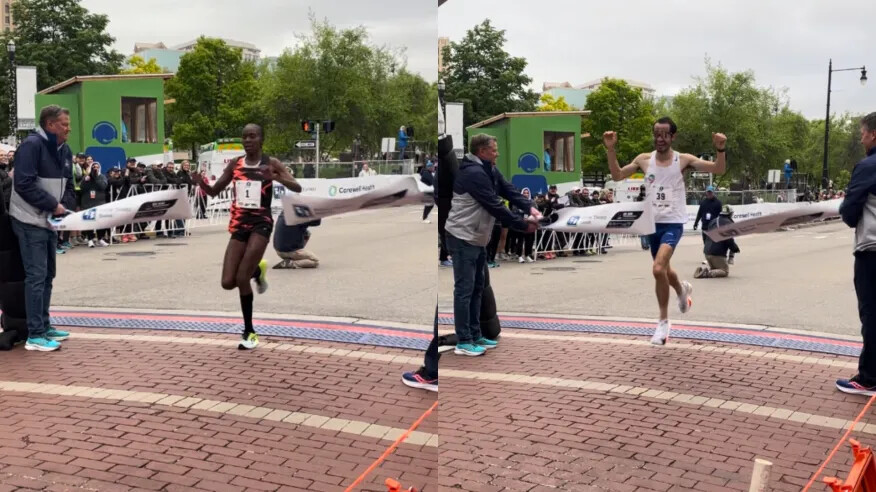
“Last year, when I came, I won the race, and I felt like it was a special place for me. Honestly, I love Grand Rapids. It’s one of the best cities I like to be in. The people are so nice. Everything is just so perfect for me. That is why I am here,” she said.
Saina, who has a 2-year-old boy, had a message for her fellow mothers.
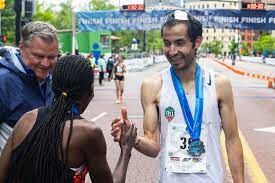
“I just want to let them know that no matter what, when you have a child, it’s not the end of the career, it is the beginning of it,” said Saina.
At this year’s race, Estrada broke the course record and set a new American record for the 25K. After finishing the race, Estrada fell at the finish line out of exhaustion.
“I was very exhausted. I made sure to put everything I had so there was nothing left in the reserves. So when I finished, I was like I hope it does not hurt because I’m going down,” said Estrada.
He said that he pushed himself hard during the last two miles of the race.
“Well, to be completely frank, when you are broke and this is how you eat, you can’t leave it up to chance,” said Estrada. “I knew I kind of had to suffer and put it down and that is what I did. I made a move.”
The 25K is the largest road race of its kind in the country and the national championship event for USA Track and Field. It has included the “race within a race” since 2015: The elite women get an 10:30 head start on the men to compensate for the average difference in finish times between sexes. If the women hold their lead and finish first, they win. If the men make up that difference and finish before the women, they win.
Tom Davis, from Fremont, Indiana, won the 25K handcycle race. He is a retired two-time Paralympian who started handcycling after he was injured while serving in Iraq.
“I started doing handcycling for therapy. A couple of years after that, I felt like God was telling me to get my bike out, start riding it, and race it and do it to glorify him. I did. It has been about eight years racing at the top level in the world,” said Davis. “I’m out here doing it for fun now.”
Miguel Jimenez-Vergara, from New Jersey, won the 25K wheelchair race. It was his first time participating in the Amway River Bank Run.
“It’s a really, really, really cool course. I have never done it before. It’s my first time coming out. It’s a really cool course with smooth roads and rolling hills. It was really cool,” said Jimenez-Vergara.
He plans to take part in the U.S. Paralympic Trials in Florida in July in hopes of joining the U.S. Paralympic Team this year in Paris.
(05/13/24) Views: 129Michael Oszust, Rachel Van Gilder
Controversy Arises Over Boston’s Moving 6-Hour Results Cutoff
For back of the packer, heartbreak is learning their finishes are not official, even though they have times.
Laura Caster wants to be clear: She knew what the Boston Marathon rule was about official finishers.

She was aware she had 6 hours from the time the last finisher crossed the starting line to finish the race in order to be considered official.
Her problem? She didn’t know what time the last finisher crossed the starting line.
Caster, 52, from Idlewild, California, was in corral 7 of Boston’s final wave, wave 4. And she crossed the starting line at 11:25 a.m. So for how many more minutes were runners crossing the starting line behind her? “Are they a minute behind me? Five minutes?” she wondered.
Every minute would count for her.
As it turned out, the final starter crossed the line at 11:28 a.m., so Caster needed to finish by 5:28 p.m. to be considered official.
Caster typically runs about 5:40 for a marathon. She finished Tokyo on March 3 in 5:41:50. Tokyo was her fifth of the World Marathon Majors six-star challenge. Boston was to be her sixth.
To gain entry to Boston, she had run for a charity, Team for Kids. She raised more than $5,000—part of the more than $40 million Boston Marathon organizers say the race raises through charity runners every year. And she treated Tokyo as a long run for Boston.
But the weather was warm on Marathon Monday, April 15. The slower runners start later in the day. And from early on, Caster knew she was in trouble. Her stomach was upset. She couldn’t take in all the fluids she needed. She was grabbing ice every time a spectator offered it.
Still, she plugged along, hitting every timing mat—even though the mats are rolled up along the course on pace with the 6-hour finish time. She passed halfway in 2:58:40.
At numerous points, Caster became aware of a vehicle trailing runners like her, who were going at about 6-hour pace. And she asked a volunteer at one timing mat, “How do I know if I’m going to be official?” Caster said he pointed at the car and told her she needed to finish in front of it.
“I was like, okay. That’s a definite answer,” she said. “I’m not going to look at my watch. I’m going to focus on not throwing up and being in front of that car.”
Caster was well ahead of the car on Commonwealth Avenue when she turned right onto Hereford Street. Just to be safe, as she approached the finish line on Boylston, Caster took a final look behind her. No sign of the official car. She crossed at 5:31 p.m., in 6:05:59. Volunteers put her in a wheelchair and sent her to the medical tent. From there, she was transported to a hospital with low blood potassium levels. She was released later that evening.
At the hospital, she looked at the results and realized she was not official. She had a gun time and a net time, but no place.
Caster was devastated. All the training, all the time and expense of pursuing the six stars, and she wasn’t really done. “I’ve worked for years, was so excited to have gotten to this point,” she said of her progress. “I was just leveled.”
Caster’s coach is Meb Keflezighi, an Olympic silver medalist and the 2014 Boston Marathon champion. On the phone with him, she broke down.
He told her, “I couldn’t be prouder of you. You missed it. We both know that you completed all six. You’re not official. But you showed grit, you showed determination.”
Allowing roads to reopen
Caster was not alone. Chris Lotsbom, a BAA spokesman, wrote in an email to Runner’s World that 497 people appeared to have crossed the Boston finish line this year after it officially closed. Volunteers staffed the area and handed out medals for approximately 4 hours, or until 9:45 p.m., longer than the race has ever continued to note times before.
Of those 497, many were within a few minutes or seconds of 5:28 p.m.
Cortney Blackburn, also in pursuit of her sixth star at Boston, missed by 37 seconds.
In an email exchange after the race with BAA officials, she asked how she was to know what the cutoff time was after she had started running. She, too, was told about the car, with flashing lights on the top, going at 6-hour pace and alerting runners if they were falling behind. Blackburn never saw the car—she finished well ahead of it—and she, too, recorded a split at every finish line mat along the way.
Lotsbom confirmed the car was there—a “road reopening vehicle”—he called it, meant to inform runners that roads were reopening and aid stations were shutting down.
“Without knowing specifics, I can’t comment on the individual instances referenced,” he wrote. “I can say that we are reviewing our processes and procedures in regards to final finishers for future Boston Marathons.”
Blackburn crossed the finish line and picked up two medals: the Boston Marathon medal and the World Marathon Majors six-star medal. Only later did she realize she wasn’t official in Boston’s results and therefore isn’t official in the WMM results, either. She has the medals, but no online record of her achievement.
But if the finish line remains open, and the timing continues, why not allow runners to be official? Or at least communicate a time—for example, 5:30 p.m.—that is consistent from year to year? Why use a moving target?
Boston’s strict cutoff is part of the agreement the race has with the cities and towns along the route. The 6-hour time limit is in place “to support the communities throughout which the race runs, to allow their road reopening program to commence as planned,” Lotsbom wrote.
“We understand we could do even more in communicating the closing time on race day and we are looking to enhance that messaging to all runners for next year to ensure everyone is clear [on] the time limit and time that the finish line will officially close on race day,” Lotsbom wrote.
A grace period
A few runners who are much slower than 6 hours get to start in earlier waves, which gives them more time to finish. For some runners close to the 5:28 p.m. cutoff, starting in an earlier corral of wave 4 would have meant the difference between an official and unofficial finish.
In 2015, some members of Boston’s Quarter Century Club, people with 25 or more consecutive Boston finishes, were concerned about the 6-hour limit, which was imposed for the 2016 race. So race officials moved them to Wave 2. Problem solved.
For others, the problem remains. And the moving cutoff appears to affect more women than men, older runners more than younger ones, and many runners of color.
Hector Espinal, like Blackburn, only discovered well after the race that he wasn’t official. He wrote on Instagram on April 18, “Despite crossing the finish line, finishing the race and receiving my medals, this morning I was informed that I did not complete the Boston Marathon in the time allotted to be considered an official finisher and @wmmajors 6 Star Marathoner.”
The post has more than 10,000 likes, and 1,000 comments, the majority of them supportive. Elite runner Mary Ngugi of Kenya, who was sixth in 2:24:24, wrote, “No no, you are a 6 time world major marathoner and a hero.”
Boston is a race that has at times struggled with its image, which critics call elitist. Spectators last year accused the race of over-policing enthusiastic fans, most of whom were people of color, at a mile 21 cheer zone, which prompted a lawsuit. Runner’s World reported in 2022 about the B.A.A.’s obscure, largely white, invitation-only membership group, which is involved with governance of the organization.
To many observers in the running community, setting a fixed finish time would be an easy way to help the race’s image as concerned about runners of varying abilities, not just the front of the pack.
Other races in the World Marathon Majors are much more lax about their finishing times, with the exception of Tokyo, which has nine cutoff points along the route, and runners are stopped if they lag behind. There are no questions, however, about where they stand.
But finishers of London, New York, and Chicago appear in results with times hours slower than the races’ published cutoff times. Berlin, which has a posted cutoff time of 6:15, stays open for an extra 15 to 20 minutes before the Brandenburg Gate closes, according to previous finishers.
Blackburn won’t be back to Boston anytime soon. “I don’t know honestly if I would do it again without major changes to actually be inclusive of non-qualifying athletes,” she wrote in a message to Runner’s World. “I think [B.A.A. officials] are putting out ‘we are trying’ vibes without actually trying.”
Caster, on the other hand, plans to try again. The uncertainty while she was on the course—and the wrong information she was given about the official vehicle—were what upset her. She doesn’t know if it would have made a difference for her had she been aware of the time she had to beat.
“But I would have liked to the opportunity to have tried,” she said. “That’s the part that I’m sore about.”
(05/12/24) Views: 125Race organizers have confirmed additional financial bonuses for record-breaking performers at the Okpekpe road race 10k
Financial bonuses for record breakers at 10th Okpekpe International 10km Road Race.
Daniel Simiu will be one of the athletes making a return to the race, having won the previous edition in style and he will be looking to impress one more time.
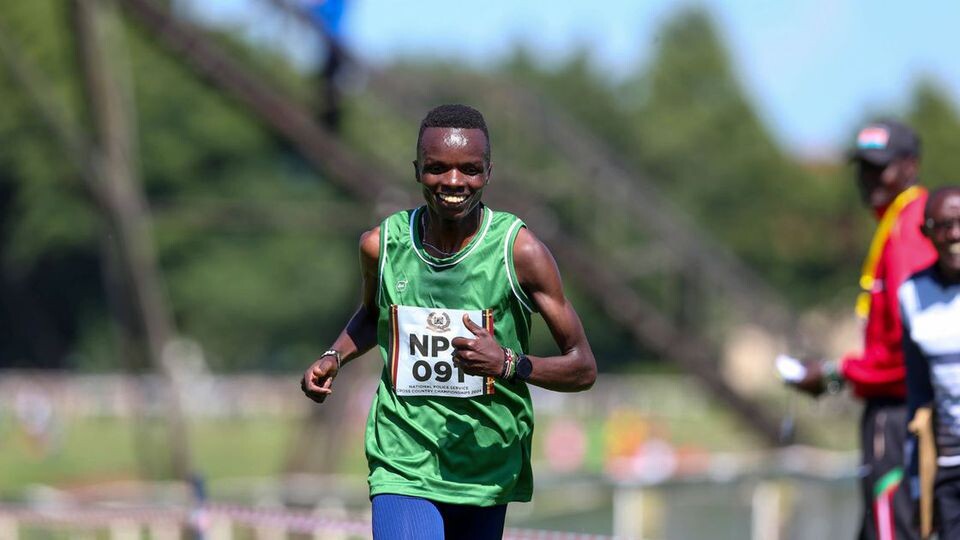
As per the race organizers, athletes who break the course, African or world records will be awarded bonuses of Ksh 262,300 ($2,000) and Ksh 655,750 ($5,000) respectively.
This is an additional amount to the prize money which is about Ksh 2.6 million (between $15,000 and $2,000) for the top five finishers of the race. The winners of the race have the honor of walking away with about Ksh 2.8 million if they manage to break the African/world record.
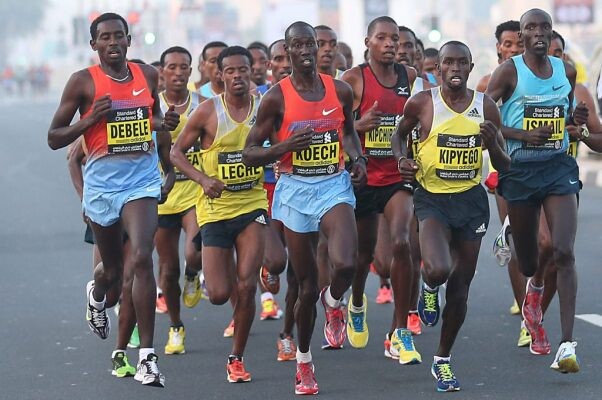
The men’s course record currently stands at 28 minutes and 28 seconds (28:28) and it was set last year by the World 10,000m silver medalist Simiu who displayed a great run and he will be looking to lower it and walk away with the bonus.
The women’s course record stands at 32 minutes, 41 seconds (32.41), and was set in 2014 by Ethiopia’s Wude Ayalew.
The men’s African/world record stands at 26 minutes, 33 seconds (26:33) and was set by Kenya’s Rhonex Kipruto in 2020 while another Kenyan, Agnes Jebet Ngetich holds the women’s world record of 28 minutes, 46 seconds (28:46) that set back in January this year.
As quoted by New Telegraph, Zack Amodu, the Okpekpe international 10km road race director revealed why the performance bonus has been introduced to this year’s race.
“This year, we have the $2,000 and $5,000 performance bonus to be earned by any man or woman who breaks the course record and African/World record respectively.
“Last year, we saw how Daniel Simiu moved very close to running a sub-28 minutes on his way to setting the 28:28 course record.
“We are motivating the athletes to run a little faster with the introduction of the performance bonus as we celebrate the 10th anniversary of the competition,” he said.
(05/13/24) Views: 122Abigael Wuafula
Kenyans outsprint locals and the rest in yet another Absa Run Your City race
Kenya’s Vincent Langat and Diana Chepkorir made it two wins in as many Absa Run Your City Cape Town 10K Series starts when they crossed the finish line first in the men’s and women’s races, respectively, in Sunday’s race in the Mother City.
Just five weeks after winning the Gqeberha, Eastern Cape, leg of the popular 10km race, Langat produced his first sub-28-minute clocking on South African soil when he won the Cape Town contest in 27:52.
Said Langat after the race:
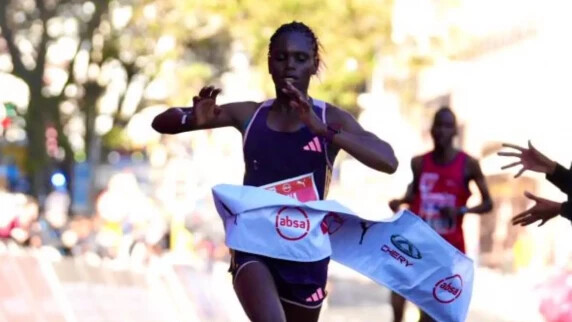
I was excited when I made my move with 1km to go. This was my best win. Elroy is a strong guy. I like him and I appreciate the competition. I will now go and prepare for the Olympics in the 10 000m.
South Africa’s Elroy Gelant grabbed the second spot.

The two-time Olympian stopped the clock at 27:55, while Francis Abongo ran a personal best of 28:16 to claim third place in his first official 10km road race outside his native Kenya.
With three personal bests over 10km, 21km and 42km over the last nine months, 37-year-old Gelant says he feels more confident than ever. He had wanted to attack Precious Mashele’s 27:35 national record, even though the wind had other ideas.
He walked away with R85 000 in prize money—R25 000 for second place and R60 000 for breaking 28 minutes.
Said Gelant:
The wind was a factor. I just told myself, like a skipper who’s on a boat when there’s wind, you just need to change your sails, so I just changed by angle of running. But I knew that I would run well. I set my watch to SA record. I didn’t get there, but I’m still happy with the race.
Meanwhile, Chepkorir emulated her compatriot with her second victory in a row.
She clocked 31:47 to win in Cape Town after her victory at the Gqeberha race early in April.
Lesotho’s Neheng Khathala was the runner-up in 32:16, while Getenesh Sase Agafew of Ethiopia came in third in 32:48.
(05/13/24) Views: 122City Press





